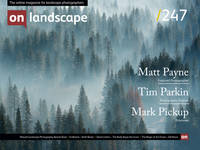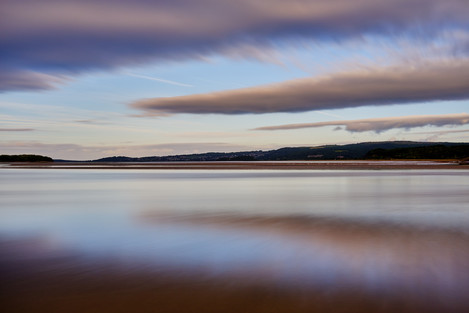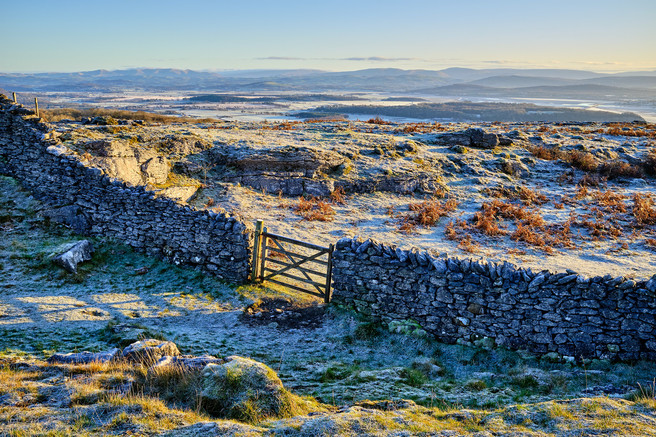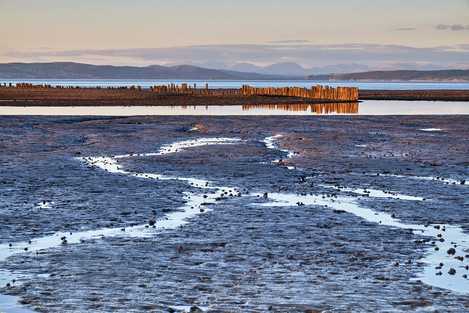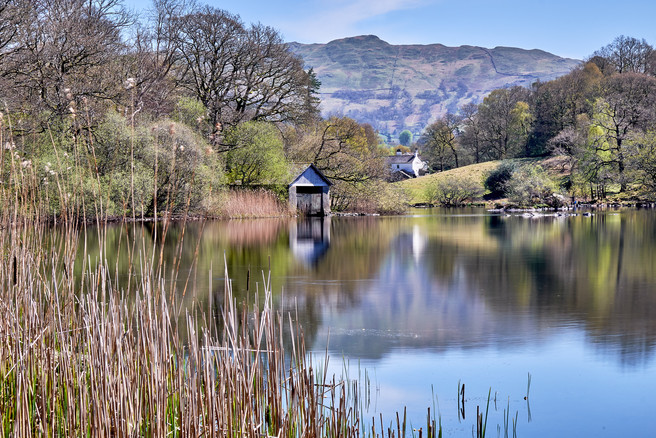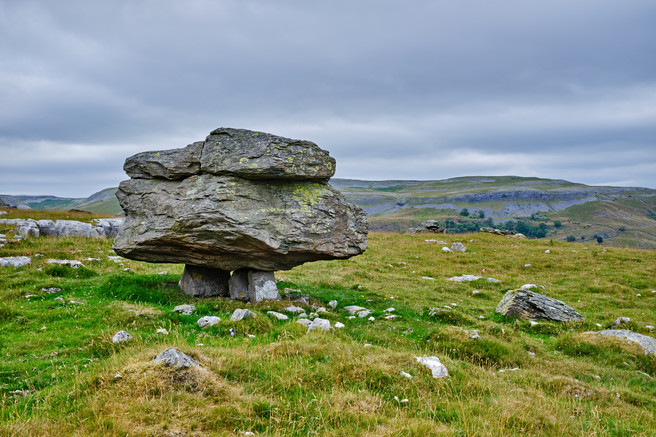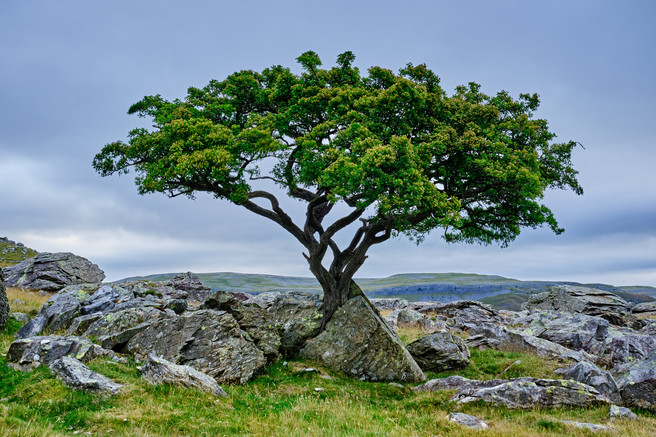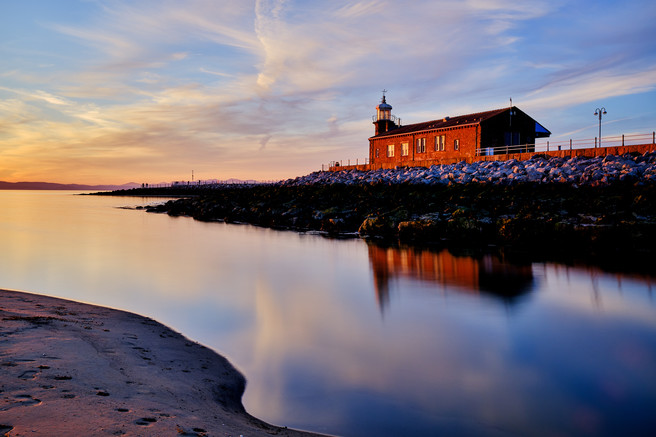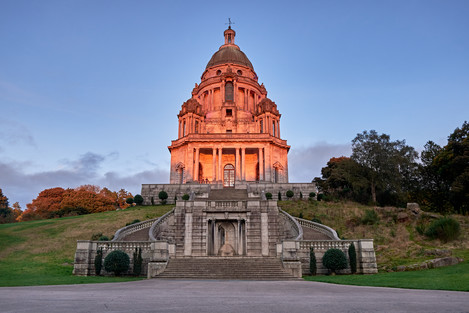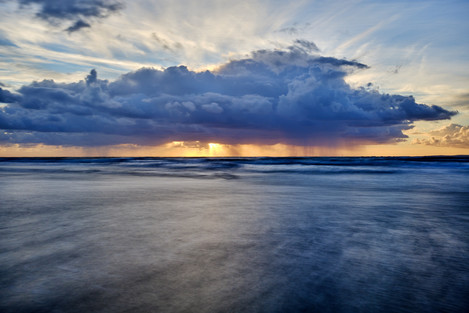An Interview

Mark Pickup
Born in Lancaster, I began taking photos back in 1992 using film cameras. I have been visually impaired since 2001.
Over the years I have been photographing, my work has appeared in a number of media publications. I have also gained awards & distinctions.
I have captured many images of my home town Lancaster & Morecambe Bay and its surrounding areas, during the ever-changing seasons.
My work captured also expands to the surrounding counties of Cumbria ‘The Lake District’ & Yorkshire ‘The Yorkshire Dales’

Charlotte Parkin
Head of Marketing & Sub Editor for On Landscape. Dabble in digital photography, open water swimmer, cooking buff & yogi.
Susan Rowe, one of our subscribers, suggested we interview photographer Mark Pickup. He recently gained his distinction from the Associateship in the Disabled Photography Society. We talk to Mark about his photography and how he has adjusted his workflow around his Macular Dystrophy.
Can you tell us a little background about yourself and how you became interested in photography?
My passion for photography began when I was 15 whilst studying art in school, enhanced by a family holiday to the island of Malta. Whilst there, I fell in love with the landscape, buildings & architecture instantly, which prompted me to use my camera almost everywhere I visited on that trip.
After leaving school I had various short-term jobs whilst progressing my photography skills & increasing my confidence behind the lens. I now consider photography my lifetime job.
Tell us about why you love the landscape genre in particular?
Being outdoors, free to roam & being at one with the surrounding nature. I love visiting locations where any two days are never the same and sometimes experiencing four seasons in one day, particularly in the Lake District!
When you started photography, which photographers inspired you? And as you progressed, did you find any new inspirations?
My overall photography inspiration was Ansel Adams, as the years progressed, I discovered the works of Joe Cornish & Charlie Waite. Both photographers’ books stimulated my interest further over the years.
A photographer local to my area called Jon Sparks also inspired me to shoot images in and around my home town, he too is a landscape photographer.
During the last ten years, you have become visually impaired due to developing Macular Dystrophy. How has his impacted your photography and how have you adapted your processes and techniques so you can still work with a camera?
This has massively impacted my craft. I now have to use various magnifiers to aid me, and I work much slower than previously to capture the image to ensure everything is correct.
I also have to use magnifiers on my digital monitors whilst editing my work.
You say on your website “I have been strong-willed and positive that this would not destroy my ability or attitude towards my photography” How have you kept your mental resilience strong and such a positive attitude over time?
Having a great team of support from my family & friends! They have kept me positive throughout all my trials and tribulations from the start of my disability. I used my photography as a crutch to help me maintain my mental health and physical wellbeing especially during the early ‘dark days’.
You have a love of the Lake District and the Yorkshire Dales. Can you tell us about some of your favourite images from these areas?
I have taken many images over the years across the two counties & have also captured many images of my home town Lancaster & surrounding areas of Morecambe Bay & its stunning coastline.
My favourite place to photograph in the Lake District is around Rydal Water, I enjoy this area as it’s a lovely low-level walk with some stunning views of the surrounding fells. My favourite image of Rydal was taken looking towards the Old Boat House.
My favourite place to photograph in the Yorkshire Dales is The Norber Erratics, close to the village of Austwick. I love the glacial erratic boulders & surrounding limestone pavement, a geographical marvel! Also, the trees which appear to be actually splitting the rocks!
Finally, my overall favourites place to photograph are right on my doorstep, Lancaster & Morecambe.
I notice that you photograph waterfalls, does the sound play a part in your experience and interpretation of them?
The sound does help somewhat but for me, it’s the actual vision of the waterfalls. The ebb & flow of the cascading water fascinates me totally!
You published a photography walking guide to Ingleton Falls. Tell us more about this project, how it came about, how you decided what locations and images to include, the highs and lows of the project.
This project was born from a conversation between myself & close friend Andrew McQueen. Andrew being a publisher & myself the photographer, seemed to be a perfect collaboration to create a guidebook!
We both had a passion for the waterfalls at Ingleton, myself through my photography trips there & Andrew taking his children there on family days out. Choosing the images was an easy task due to my photo stock of the area being very large.
Combining Andrew’s knowledge of the area & my images the book was created & rolled into publication.
You have also published a photography guidebook on your home town Lancaster with Andrew McQueen. The photographs are more urban and architectural than landscape. How did you find photographing a different style? How did this collaboration come about with Andrew?
This project came very naturally to me, being my home town, there was always going to be a familiarity when shooting the images. I felt totally at ease whilst capturing each subject & knowing the subjects’ history helped me even more.
In all honesty, I felt this project was a positive challenge knowing I had to get it spot on as being my home town.
Again, as with the Ingleton book, this idea was born over a cup of coffee with Andrew. We both knew it was something that we needed to do!
In 2013 you gained your distinction in ADPS, (Associateship in the Disabled Photography Society). You submitted 15 pieces of work to be judged. Can you tell us about the images that you submitted and how you chose these images?
The subject I chose was Blackpool, captured over a number of visits. The images ranged from landscape to everyday life. Such views captured on the promenade included a family sitting with their luggage having a chat, donkeys on the sand and also some abstract images from everyday life including a seagull perched near some street lighting.
You are an Ambassador for British Photography Awards. Tell us more about this role and how you got involved.
At present, the role is low key with very little involvement in honesty. It came about from me helping other visually impaired people learn photography.
Which cameras and lenses do you like to use, and how do you approach post-processing, editing and sequencing?
I currently use Fujifilm cameras, the X100F with a fixed 35mm equivalent 23mm F2 lens being my favourite amongst other Fuji models.
I use Capture One editing software and have done for the last four years. Once all images are loaded up, I choose the images I want to keep/use & process them accordingly, this usually only being small tweaks.
Are you working on your next project or do you have any future project ideas that you’re thinking about?
In completion is my annual ‘Lancaster Calendar’ which is compiled of images from the last 12 months capturing my home town.
I’m currently in the final stages of organising my Photography Exhibition being shown at The Storey Gallery in Lancaster. The theme of my exhibition is ‘Images of The Morecambe Bay Coastline’ I will be exhibiting 10 images taken over a period of the last 18 months.
- Sunsetting in Morecambe Bay
- Shipwreck at Roe Island
- On the coast at Silverdale
- On the beach at Morecambe
- Looking towards the promenade at Morecambe
- Looking back at Morecambe At Sunset
- Just after sunset at Morecambe
- Frosty Morning on Hampsfell Near Grange Over Sands
- Boat in Morecambe Bay
- Before Sunrise at Arnside
- Sunset on the beach at Morecambe
- Rydal Water
- Norber Erratics Stones
- Lone Tree at Nober Erratics

